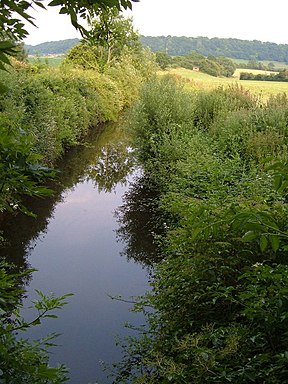Chard Canal
The Chard Canal was a 13.5 miles (21.7 km) tub boat canal in Somerset, England, that ran from the Bridgwater and Taunton Canal at Creech St. Michael, over four aqueducts, through three tunnels and four inclined planes to Chard. It was completed in 1842, was never commercially viable, and closed in 1868. The major engineering features are still clearly visible in the landscape.
Prior to the construction of the canal, there had been several plans over the previous 50 years to build a ship canal from the Bristol Channel to the English Channel, in order to avoid the route around Cornwall and Devon. The first which would have connected Chard to the canal network was a scheme surveyed in 1769 by Robert Whitworth, to link the River Parrett to Seaton in Devon. Whitworth was asked to reassess this route in the early 1790s, and again thought it was feasible. The plan was revived in 1793, while another route was suggested in 1794 by Josiah Easton, again passing through Chard.
The 1793 Chard Canal plan was revived in 1809, by now renamed as the English and Bristol Channels Canal, and the engineer John Rennie was asked to survey it in 1810. He advocated a small ship canal, suitable for vessels up to 120 tons. The cost of a barge canal had been estimated at £70,000, but Rennie's estimate for a ship canal was £1.33M. One further attempt to build a ship canal took place in 1825, when a canal capable of taking vessels of 200 tons, with a draught of 15 feet (4.6 m) was proposed. 30 locks would have been required, on a canal from Stolford on the Bristol Channel to Beer on the English Channel, passing through Creech St Michael, Ilminster and Chard, at an estimated cost of £1.7M. Thomas Telford produced the survey, an Act of Parliament was obtained on 6 July 1825, and although subscriptions of over £1.5M were promised, no further action occurred, with the Company disappearing after 1828.
...
Wikipedia

